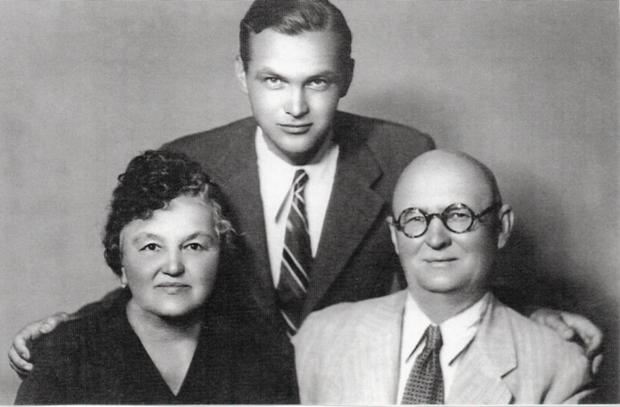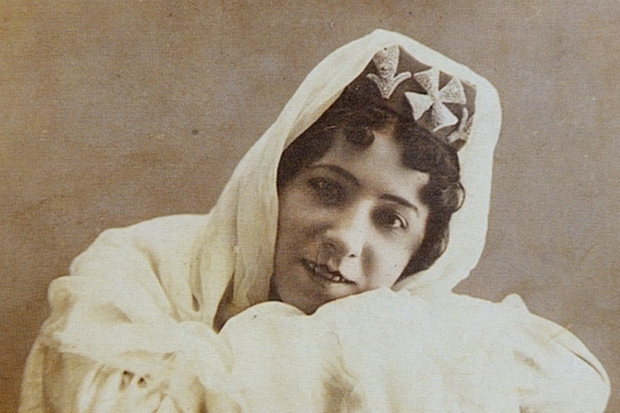Mixed marriages 100 years ago: blind marriages, class-ethnic contradictions and Soviet assimilation
What the Tatars thought about the interfaith marriages 100 years ago. Part 2
A historian, columnist of Realnoe Vremya Liliya Gabdrafikova continues to acquaint our readers with the phenomenon of interfaith marriages before the revolution. In today's column, written in continuation of the previous article, she tells about the reasons for this unusual choice of the Tatar grooms and about the change of the situation in the first years of the Soviet power.
In search of a wife-intellectual
The issue of the relationships of the Muslim men with Russian young women was raised repeatedly in the Tatar press. The issue was discussed in 1906 on the pages of the Vakyt, Bayanel-khak, Kazan mokhbire newspapers. In Vakyt, a writer and theologian Rizaetdin Fakhretdin was published under the pseudonym of Dervish effendi, he was concerned that educated Tatar young men were choosing young women of another faith as wives.
''As a result, children in their families are brought up in the Russian, Polish and Jewish spirit. In order to prevent this, it is necessary to improve an educational level of the Tatar women,'' considered Fakhretdin.
According to a merchant Akhmetzyan Saidashev, the editor of the Bayanel-khak newspaper, the marriages of the Tatars with Russian women threatened nothing and even could contribute to the further spread of Islam. Joint studies of Russian and Tatar girls seemed to Saidashev a greater danger. He believed that this could lead to the downfall of the religious-moral foundations of the Muslim women.
A continuation of the theme was the article of Gafur Kulakhmetov ''Muslim young man and Russian young women'' in the Kazan mokhbire newspaper. The author did not support either Fakhretdin or Saidashev. The main idea in the article by G. Kulakhmetov boiled down to the fact that among the Tatars there were few equal marriages, in the first place by intellectual development of the spouses.
Gabdelbari Battal in the article published in 1909 in the Vakyt newspaper wrote that after the revolution of 1905, the number of mixed marriages between Tatar men and Russian women increased, as well as with Polish, French, Jewish women. To counter this phenomenon, he offered to organize a decent education for the Tatar women that would be no worse than for men.
The fact that young men and women could not communicate with each other before the wedding sometimes prevented the happy marriages. The bride and groom often met for the first time at the ceremony of Muslim marriage — nikah, and sometimes even after it. The situation slightly changed when the photography was invented. Young people, especially women, were sometimes showed a portrait of a potential spouse. In some cases, it could influence the family final decision on marriage.

However, no photo could replace live communication. Therefore, some future spouses were acquainted with each other through letters. For example, a theologian Musa Bigiev had correspondence with his future wife. Because of these moments, some of the Tatar men preferred to have relations with more emancipated Russian women.
Will you marry me and… my people?
Perhaps, the most outstanding work on the problem of mixed marriages is the story by Gayaz Iskhaki He was still not married written in 1916 in Moscow. The protagonist, Shamsetdin, falls in love with a Russian widow Anna Vasilyevna. He grew up in a Tatar village, but after the madrasa graduation he moved to St. Petersburg, where he works as a counterman in a Tatar shop. Shamsetdin and Anna begin living together, young people like to be together. It should be noted that even judging by the title of the story, the protagonist does not perceive cohabitation as normal marriage, he feels that someday he will marry a Tatar woman and he will have a real family.
However, after several years, the couple have their firstborn baby, and it becomes clear for the young man that the relationships with Anna is not a temporary phenomenon. Among young people there are no psychological or intellectual barriers, but there is the unchanged facet — religion, with it there is the question of children upbringing. Anna, who has tried for many years not to stick out her faith in front of her beloved, eventually she brought the children to Church and went on her own way — she baptized them. G. Iskhaki describes the complicated spiritual struggle of Shamssetdin: love to his roots and to a woman of another faith intertwine in him. He suddenly feels the rejection of her culture and the beloved children turn out to be far from him. Because of his regular occupation, Shamseddin failed to teach the daughters to speak the Tatar language, to pray as he prays, to understand his world.
Thus, the writer warned about the consequences of education and integration in the Russian environment — first and foremost, it is children who suffer in mixed unions. G. Iskhaki said about this issue in the press. He urged to pay more attention to the upbringing of youth, first of all, the organization of their cultural leisure.
A social activist and editor of the children's magazine Ak Yul Fakhrelislam Agiev at the dawn of his youth was passionate about a Russian girl Margaret, she was from a family of poor nobles. They had known each other from childhood, because the future editor was growing up in the Penza Province. His parents — father-mullah and mother-abystai — were very worried about this fact, but the lovesick young man was adamant. In the end, F. Agiev married another woman.
Thinking back to his youthful passion, later Agiev recognised that the opinion of a writer and historian Gaziz Gubaidullin had a great impact on him. He managed to convince the romantic young man that Margarita loved only Fakhreislam, but she would never be able to love his people, the culture and even to talk about matters, for example, about the Tatar magazine Ak Yul, in his own home he would have to speak in Russian not to offend his beloved with ununderstandable for her speech.
As his last argument, the son of a Kazan merchant Gubaidullin cited the class contradictions between the spouses. According to him, he would not have dared to get married not only a Russian aristocrat Margarita but a daughter of a Tatar mirza-nobleman of Maryam. The spouses have too different world understanding and of private life of the spouses. Obviously, for a fascinated by the ideas of national progress, development of the Tatar culture F. I. Agiev, the words of Gubaidullin seemed more persuasive than the entreaties of the parents. After some time, he married Sufiya Kulakhmetova, sister of a writer Gafur Kulakhmetov.

A path to the Soviet identity
Major part of the Tatars avoided mixed marriages, trying to preserve their religious and ethnic identity. In the cities, where Russian population dominated, for example, in the two capitals, the Tatars-migrants played a considerable role here. For example, the second generation of the Tatars who grew up in St. Petersburg in the late 19th — early 20th century married women from a national depth of the country, and thus removed a danger of assimilation. Overall, in the late 19th — early 20th century, the mixed couples among the Tatars were rare, although already caused panic among the public. This attitude was reinforced by state policy, the conductors of which were the Muslim clerics and Christian priests. The sentiments of the Tatar Muslim society were reflected in the literature of the early 20th century, where the family was considered not only as a union of two loving people but also as a place of preservation of cultural and religious traditions.
However, the time after 1917 showed how fragile were these ideas about the traditional marriage. Already in the years of the Soviet power, after the abolition of all legal restrictions there were many mixed unions concluded. In particular, they were typical of the educated Tatars, who were usually the descendants of merchants and clergy. For example, even the son of a famous theologian Musa Bigeyev, Ahmed, in the early 1930s married Tatyana Pastukhova, the woman of a noble-merchant origin. The religious leader at that time already did not live the USSR, he emigrated. His wife, A. Kamalova, was against this marriage, but A. Bigeyev did not listen to his mother. The couple had sons — Iskander and Boris, and later the couple divorced.
The marriages of Muslims with Christians happened before the revolution, however, there were virtually no examples of marriages of Tatar women from rich merchant families with representatives of not their faith. However, in the first years of the Soviet power, religious prohibitions began to be violated. For example, one of the daughters of a Moscow merchant A. Burnashev married M. Lutsky, a secretary of F.Dzerzhinsky, the other — a nephew of Mikhail Kalinin. The first Tatar actress S. Gizzatullina-Volzhskaya in the 1920s married V. Rusinov from Izhevsk. There are many such examples, Tatars readily integrated in the Russian-Soviet society (they gave their children international names and were brought up in the same spirit) and adopted the laws of assimilation. Entire Tatar villages gradually disappeared. Especially sad is the fate of the Tatars living in the former Kasimov Uyezd of the Ryazan Governorate, which almost dissolved in the Russian environment.